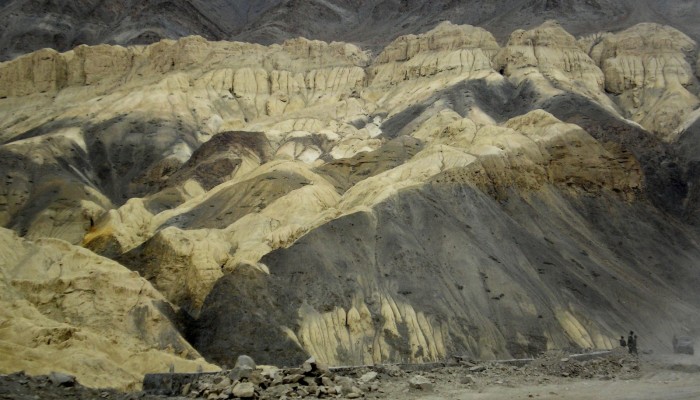The Himalayas: vast, formidable and home to the Earth’s highest peaks. The mountain range stretches inexorably through Indian, Bhutan, Nepal, China (Tibet) and Pakistan separating the Tibetan Plateau to the north from India’s alluvial plains to the south. India, as we know it today, started life much further south, as an island not far off the coast of Australia. It was separated from ...[Read More]
Imaggeo on Mondays: Moonland

The moon-like landscapes surrounding the Himalayan village of Lamayuru attract tourists seeking off-the-beaten track adventures. The village is enchanting, not only for the striking geological formations that frame it, but also for the presence of an 11th Century Buddhist monastery. “The rock formations are known as ‘Moonland'”, says Arjun Datta, author of this week’s imaggeo on ...[Read More]
Imaggeo on Mondays: A fractured relationship – when lava meets ice
The Kuril Island Chain is formed by four active volcanoes: Golovnin, Mendeleev, Tyatya and Smirnov. Stolbchaty Cape, where the Okhotsk Sea meets the coast of Kunashir Island, is not far from Mendeleev Volcano – responsible for the many hot springs in the area. These are fed by seawater and heated as the water comes into contact with magma and hot rocks within the mantle. The picture shows an outcr ...[Read More]
Imaggeo on Mondays: An orogenic experience
Picture yourself in the Himalaya mountain belt: millions of years of continental uplift have produced a vast kingdom of towering monoliths, and they continue to grow as the Indian plate pushes further north into the heart of Asia. These dramatic, breath-taking and downright enormous geological structures can be simplified into the following tectonic units: the Leugogranites, the Transhimalaya, the ...[Read More]
